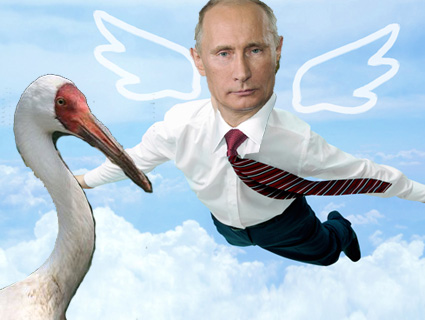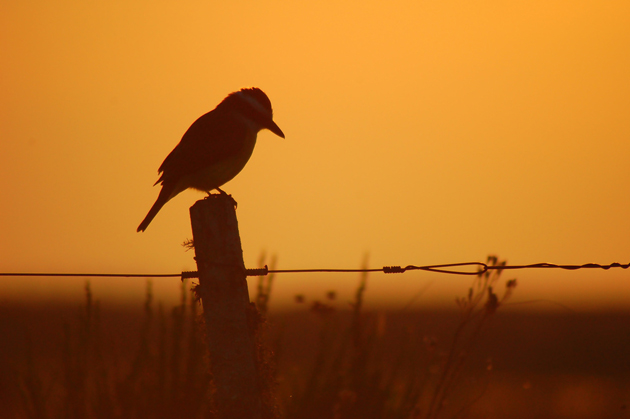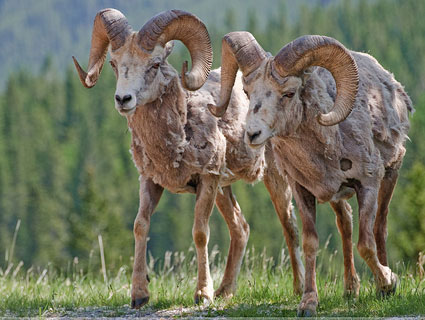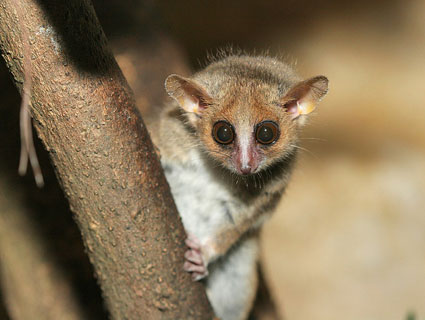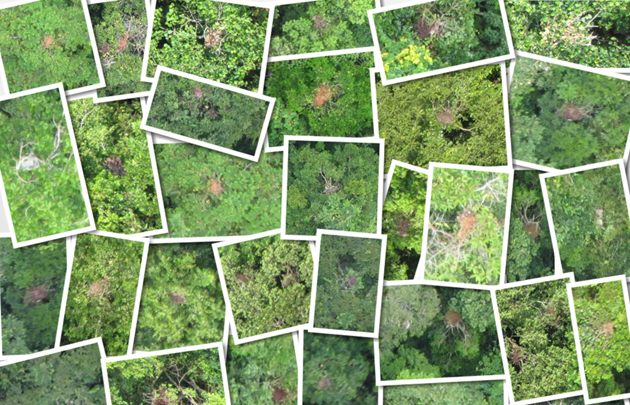
A collage of images of orangutan nests photographed by conservation drones.<a href="http://www.flickr.com/photos/drlianpinkoh/7905480030/in/photostream/">DrLianPinKoh</a>/Flickr
This post first appeared on the Scientific American website.
What better way to study the world’s largest arboreal animals than by putting an eye in the sky? A team of scientists working in Indonesia has done just that by launching inexpensive unmanned aerial vehicles (a.k.a. drone airplanes) to study critically endangered Sumatran orangutans (Pongo abelii) from above the treetops. The technology is already being put into use in other conservation projects around the world.
Autonomous drones can help scientists and conservationists to inexpensively collect timely, high-resolution data, says Serge Wich, professor at the Research Center in Evolutionary Anthropology and Paleoecology at Liverpool John Moores University. Wich and his partner, Lian Pin Koh, assistant professor of applied ecology and conservation at ETH Zurich, have developed a lightweight drone system that costs about $2,000—including the batteries, software, cameras, and flight stabilizers. Other commercially available drones, by comparison, cost as much as $50,000. Wich and Koh have set up a Web site, ConservationDrones.org, to help spread the technology around the world, and have recently consulted on similar projects in Nepal, Malaysia, and Gabon.
The duo first tested the drones in Sumatra in February, when they were able to capture video and photographs of orangutans and elephants. The drones also came back with striking images of Sumatra’s deforestation, caused by logging and palm oil plantations. The rapid destruction of the island’s forests (both legally and illegally) has devastated its native orangutans, which have lost about 80 percent of their population over the past 75 years to about 7,300 animals. (The related Bornean orangutan species, P. pygmaeus, also suffers from the effects of deforestation and its population is estimated at fewer than 45,000 animals.)
After working out some of the initial kinks, Wich and Koh returned to Sumatra earlier this month where they achieved a goal they weren’t able to accomplish the first time around: capturing photographs of orangutan nests high in the trees, information that will help inform future conservation activities.
I spoke with Wich about the research and their work to develop drones for conservation.
[An edited transcript of the interview follows.]
What problems are you trying to solve with these drones?
As conservation researchers, one of the main problems we have is that we’re almost always behind the facts on the ground. These areas are huge and difficult to monitor on a regular basis, so doing ground surveys is not the answer unless we had millions of dollars to do this all the time. So we need a means to get effective, timely, and high-resolution data. Drones can help us with this because we can fly them whenever we like, and they provide us with high-resolution data whenever we like.
What do you hope to learn from these missions, and how will it be applied to conservation?
Our main aim with this is that we have a system which enables us to monitor the distribution and abundance of orangutan populations much faster than we can now. We just finished a Sumatra distribution-wide orangutan survey, which took us about two and a half years and cost about $250,000. That’s a fantastic data set but it’s not something we can do every year, because it takes longer than a year and it’s not something we can fund every year. So these drones will be a system that we can use to fly over the forest edge every month if we like, or every week, to check what’s going on there. If there’s illegal encroachment, we can inform the authorities. We don’t learn it from a satellite image that we get half a year or a year later; we get it much faster, and that will hopefully enable us to react much faster to changes on the ground.
You don’t see what the drone sees while it’s in the air, right? You program their flight path, let them go and then look at the data when they return.
We’re looking into getting a system that provides us live feedback from the video, but at the moment you have to wait until it lands to see the images. The flight path is really simple to program. It’s basically just a Google Earth or Google Map satellite and you plop in waypoints and load it into the autopilot on the plane. That’s all thanks to the do-it-yourself drone folks. They make this autopilot and the software for you.
You overcame some technical challenges with your mission this month.
The main challenge in the beginning was to get high-resolution stills. Video went fine from the start, but for stills there was often motion blur. The plane flies really fast and if you have a long shutter time on the camera that won’t work. We had to fiddle a lot with the camera settings and develop a system that would dampen some of the plane’s vibrations—which ended up being a very simple kitchen sponge.
Getting back to the orangutans, are the plantations that you saw legal or illegal?
It’s often a mixture. Surely in Indonesia there are a lot of legal concessions, either oil palm or timber, that take over forests. But at the same time there’s a lot of illegal encroachment on the forest edges.
How close to the plantations were the orangutan nests?
Very close. You basically still find them in plantations as well, although we didn’t fly over plantations yet. You find them up until the edge of the forest, and also in habitat that’s partially converted. Orangutans are quite hardy in that sense. The females in particular don’t move away. They’ll hang on to any tree they have until they starve or are captured.
Do the nests degrade quickly? Could some of the nests you saw be months or years old?
Orangutans make new nests every day. They’re pretty active nest builders. We can usually tell a little bit about the age of a nest from a photo but not all that much. They’re remarkably sturdy depending on the areas where you’re in. In some areas they can easily last for a year or sometimes two years. They’re great, pretty thick branches.
Is your main goal research or conservation?
It’s a mixture of both. I really hope that we’ll be able to use these drones to monitor populations in pristine areas, so it will give us information on how these populations fluctuate in their natural habitats, what kind of trees they use, what their densities are and how that relates to environmental variables. But at the same time, we can use these drones to monitor habitat changes and help us in conserving orangutans and other species.
What’s next for your work in Sumatra?
There are a few things that we’re planning. The first, now that we know we can detect nests, is to do a proper study where we do ground surveys and aerial surveys and see if we get the same numbers. And the second part will be to deploy other types of cameras. We’re looking into thermal imaging to see if we can detect orangutans by those means. That will be very interesting to put those up on a drone and fly them at dusk and dawn and see what we get.
What was the purpose for setting up ConservationDrones.org?
The aim of the site is really to distribute everything that we learned from our work so anybody who wants to build the same drone as we use can do that with the information on our Web site. For us, it is really trying to bring this technology to every corner of the conservation world and especially into areas where there’s not so much money—so [it would be] where an NGO needs a system that is simple and that they can fix themselves and that provides them with a sustainable tool in their tool kit, instead of a very expensive drone from an expensive company.
You’re also consulting with the WWF on using drones in Nepal to try to prevent poaching of tigers, elephants and rhions.
That’s our technology. Lian, my colleague, just came back from training many people there. We were there together a few months ago to do a demonstration. It’s one of our bigger projects at the moment.
What exactly are drones in Nepal looking for?
It could either be the humans directly or traces of human activity, like people making fires. If there are poachers drying bushmeat, for instance, you would see that smoke above a forest and you would know that there are people there that are actively doing things like that—and then you can send a ground team in to try to prevent people from doing that.
What’s your next hope for this technology?
We are working with some people so that hopefully in the not-too-distant future we will have a system that can detect objects directly on the video—like fires or people or elephants or whatever—so that when you look at a video, either live or when the drone lands, it tells you where those items of interest are. That would help the response time of antipoaching patrols but it would also facilitate any scientific research, as it’s quite a lot effort to go through thousands of photos to look for particular objects. We can automate that and an algorithm would just look for elephants, for example, in all of those images. That would help us a lot to use these drones even more effectively. That’s something we’re working on with several university people.
